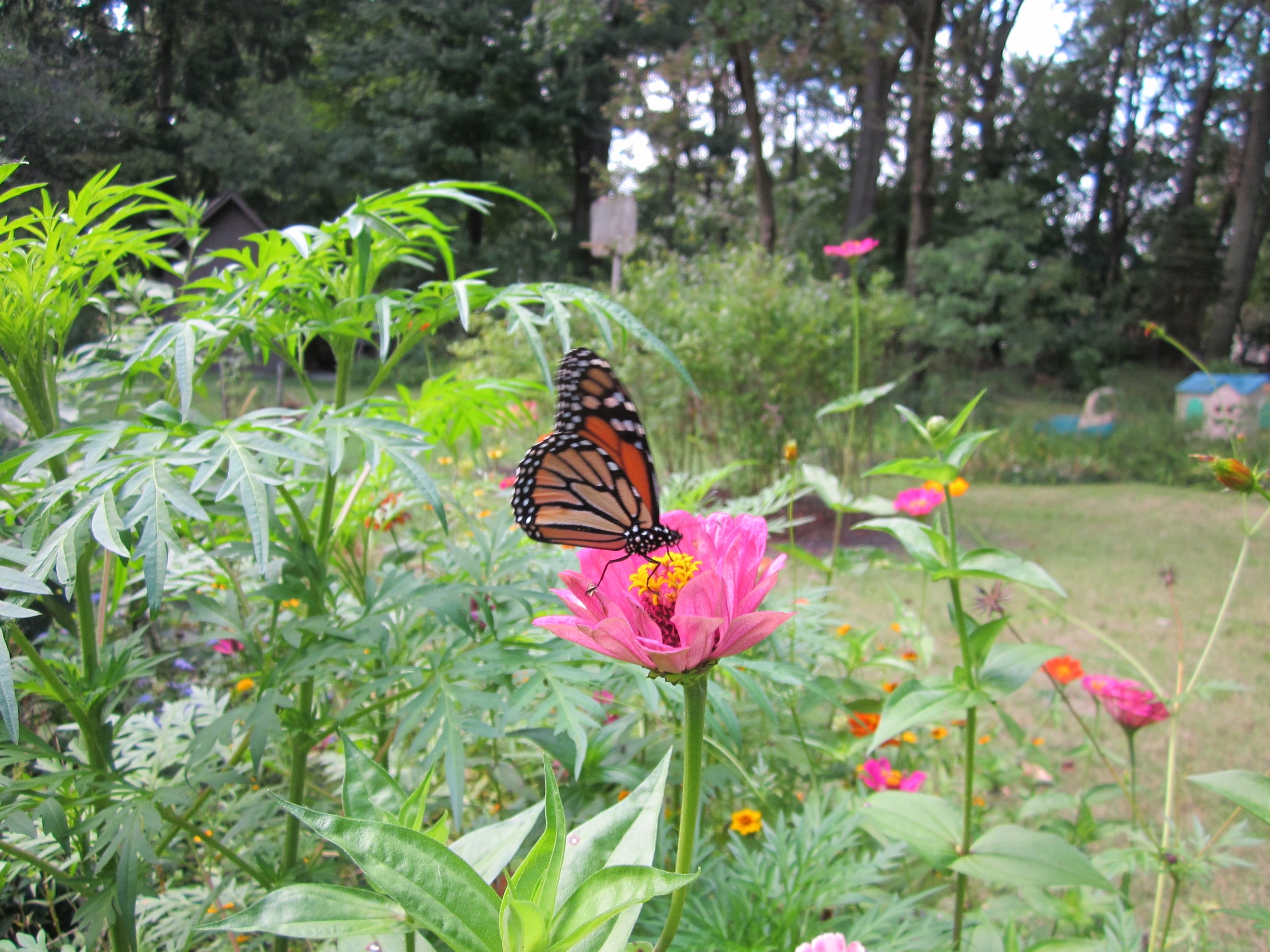by RC Wilson
A few years ago, my buddy Karl and I were sitting in on a college class called “Local Flora”—Ohio lets senior citizens audit university classes. The teacher asked, “Which plant family do you think is the biggest, by number of species?” My buddy, who is hard of hearing, asked me, in a loud whisper, to repeat the question. I am hard of hearing too, so you can imagine how that worked out. Our answer was “Asteraceae,” the daisy family. Here in the temperate zone, they are everywhere you look. “Good guess,” said the teacher, “but the answer is Orchidaceae, the orchids.”
We don’t have a lot of species of wild orchids here in Ohio. What has me thinking about this question now, as I watch various daisy family members bloom, is that I am currently working on a book of pollination poems by Ohio poets. These two plant families have such different approaches to pollination. Pollination, as you probably know, is how plants have sex. Some just hope the wind blows some pollen in the right direction. While simple and effective, this method takes a lot of pollen. I remember parking under some pine trees in Georgia for a couple weeks, and when I came back my windshield had a pollen layer about an inch deep. Wind pollinating plants waste an awful lot of pollen, and pollen takes energy to produce. Orchids and daisies use a much more efficient (and kinky) process. They rely on a third party, an animal, to carry a little pollen from one flower to another. All the pretty colors and intoxicating odors we associate with flowers are devoted, not to us, but to these little animal partners in the plant’s three-way sex party.
Orchids, which mostly live in the tropics, have some notoriously secret assignations. Many species of orchid rely on a single species of insect or bird for pollination. They hide their precious nectar for the one true partner who will carry the pollen to, and only to, another orchid of that species. In South America, there are hummingbirds with long curiously shaped beaks that coevolved with orchids who have long curiously shaped blossoms. Lesser birds and insects need not apply. Only the blessed one will do. Wow! If humans needed hummingbirds to have sex, what a strange world it would be. I blush. I wonder. Maybe, in a spiritual sense, really good sex does involve some cosmic hummingbird, but I digress.
The daisies, on the other hand, have a “come one, come all” approach to their insect pollinators. Sometimes our purple coneflowers (echinacea) look like Hopkins Airport, with various bees, flies, and butterflies jostling each other as they land or take off. Instead of hiding one pot of nectar like an orchid, the daisy family splits the nectar between many florets. Take the giant sunflower. What looks like a single big flower is actually a complicated arrangement of small florets. Around the outside are the “ray florets”, spreading out like flower petals, like the rays in a drawing of the sun. inside the circle of ray florets is a large convex disc, covered with disc florets. Each of these disc florets has its own nectary, its own ovary, waiting for pollen from the leg of a visitor. Each disc floret has the potential to produce a seed for us to roast. And oh, how the bugs love these things, from the smallest aster to the biggest sunflower, they stop and visit floret after floret on the big nectar vending machine.

So, who has the better strategy, the orchids or the asters? It depends. Rainforests are ancient and complex ecosystems, with many thousands of plant, animal, fungi, and microbial components, constantly cycling nutrients, passing the love from one level of the system to another, and hardly spilling a drop. One of the ironies of burning the Amazon to make farms or grazing land, is that the resulting soil is disappointing. All the nutrients were in the system, and little makes it down to build topsoil. In a rainforest there are many specialists like the orchid and its hummingbird. The orchid approach to pollination has served it well for ages, but this kind of specialization may be less useful when the forests are burned down.
Here in Ohio, where we burned the forests down a couple centuries ago, the asters seem to have a good plan. Lay out row after row of nectar bearing florets, turn on the landing lights and invite anything with wings, and even a few crawlers, to come join the party. “Let the orgy begin,” says Elsa Johnson, one of the poets in the aforementioned book. Yes, plants are doing it, day and night, right out in the open, the dance of life.
Fun article. But I have to mention the non-native, unattractive orchid that pops up everywhere (including between a 10 foot deep concrete pad and the foundation of our house–how the heck does it get there?)–is epipactis helleborine. Considered invasive in many states.
And while we’re talking orchids–a non-fiction book suggestion that reads like a novel: The Orchid Thief by Susan Orlean, a former Shakerite. You’ll learn a LOT about orchids, and it’s a fascinating story of the main character.
Thanks Laurie! Good book recommendation. I always enjoyed the Nero Wolfe mysteries, with Nero’s greenhouse full of rare orchids on a Manhattan rooftop. He never left the house, but he ate well, and he loved his urban garden.
I just loved this article on 2 plant families. Witty and informative. Thank you.